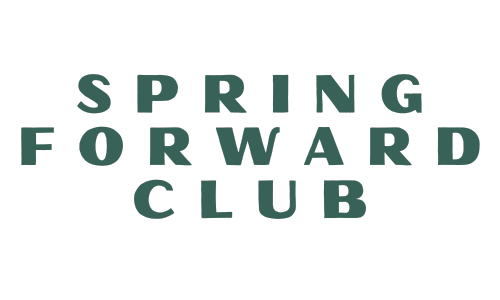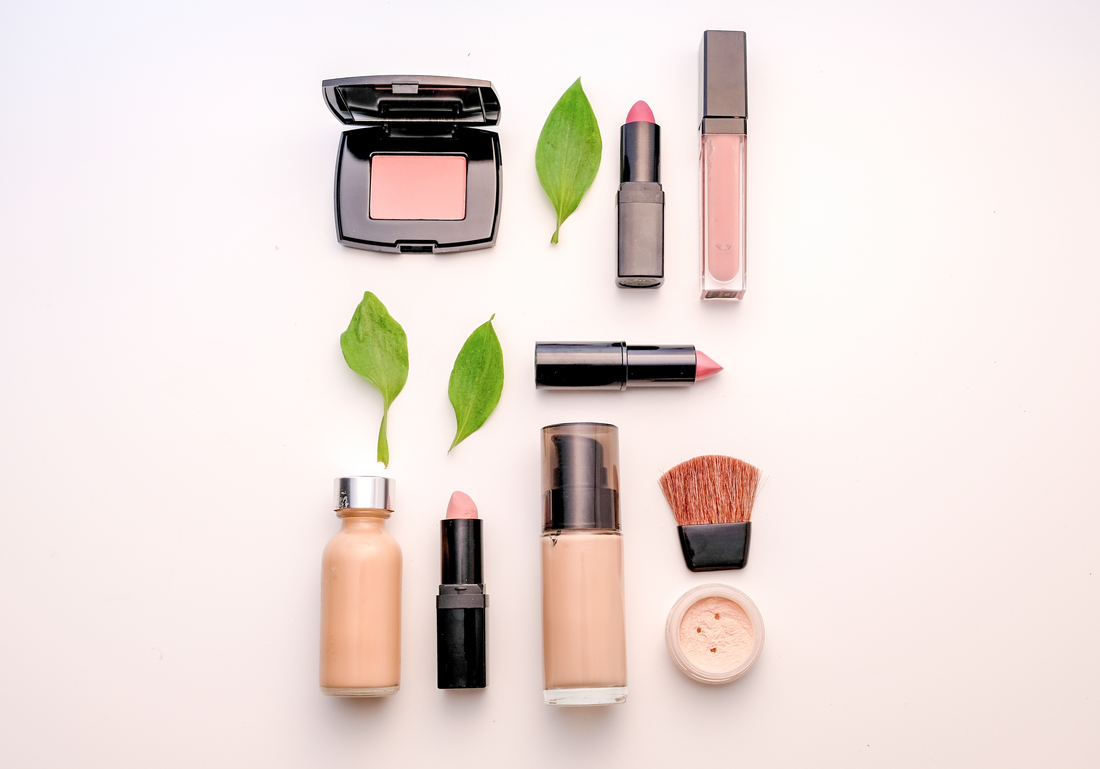"Clean Beauty": What Lies Behind the Label
Diving into the world of "clean beauty," a term we've all heard, but what does it really mean?
With growing awareness of potentially harmful ingredients linked to serious health issues, the "clean beauty" movement is gaining traction. However, the marketing gimmicks can be perplexing .. so let's clear the air.
Surveys indicate that over 60% of individuals are seeking cleaner, safer products. However, brands often seize this opportunity to enhance their image without fundamentally improving the product. They resort to clever marketing strategies and greenwashing to appear cleaner.
The Illusion of Clean Beauty
Amazon recently introduced clean beauty categories, and a popular one is Sephora's clean beauty tag. While they're stepping in the right direction by acknowledging the demand for cleaner, less toxic products, it can be misleading. For instance, Sephora's clean beauty tag has prohibited only around 50 ingredients. On the contrary, Credo Beauty has made significant progress in aiding consumers to discover genuinely better personal care products by banning a whopping 2700+ ingredients. Whole Foods ignited this movement a decade ago; however, they've only banned slightly over 100 ingredients from their personal care and body care product range.
Navigating the Unclear Path of Beauty Product Regulations
Here's the twist: the beauty industry in the U.S. isn't as regulated as you might assume or if you know some things then this may come to no surprise. Although there are some "guidelines", it remains largely unregulated. Consequently, "clean beauty" lacks a strict legal definition causing even more confusion.
Understanding the Truth Behind Buzzwords and Labels
The beauty industry in the U.S. resembles the Wild West. Companies often embellish labels with terms like "naturally derived," "nontoxic," and "clean." Sadly, these are predominantly marketing ploys as these terms are unregulated. This makes it difficult to understand which chemicals in these products might be harmful especially when the marketing is all over the product.
Advocating for ourselves is essential. The US has only officially banned only 11 harmful ingredients compared to the EU's 1300+. It is time to understand the toxins and take a step towards cleaner choices.
A fantastic starting point is the Environmental Working Group (EWG), a resource that allows you to plug in your favorite products and see how toxic it is with a 1-10 rating system. Another way to use their platform is to directly search for each of the ingredients listed on the products. I have also listed out some common toxins below and some of my favorite clean swaps.
Your Skin Deserves Better
Our skin is the body's largest organ and it deserves our attention just like the foods we consume. It's alarming to think about the toxins we apply directly to our skin daily. Take deodorant for an example which is usually loaded with harmful chemicals, we directly apply it onto our lymph nodes. This is one of the mechanisms of our body that is essential for removing toxins and yet most people are applying toxins to that direct location.
With limited tests available to determine our absorption of these chemicals, it's prudent to opt for products that minimize our overall exposure to toxins, especially during pivotal life stages such as pregnancy, childhood, or puberty.
The Toxic Truth
Consider this eye-opening fact: on an average day, women use about 12 products encompassing hair care, lotions, skincare, makeup, etc, amounting to a staggering 150+ chemicals. The number of toxins applied daily is also on the rise for men. The mission is clear, to diminish our toxic load as much as possible, and a great starting point is our personal care products.
Clean beauty is more than just a label; it's a conscious choice.
Here are a list of some of the common chemicals to avoid:
- Parabens: Used as preservatives, they can disrupt hormone function.
- Phthalates (e.g., Dibutyl Phthalate, Diethyl Phthalate): Found in fragrances and plastics; can disrupt hormones and have been linked to reproductive issues.
- Formaldehyde and Formaldehyde Releasing Agents: Used as preservatives and known carcinogens.
- Triclosan and Triclocarban: Causes hormone disruption, potential carcinogenicity, antibiotic resistance, disruption of microbial balance, and skin irritation.
- Toluene: harmful to the nervous system.
- Butylated Compounds (BHT, BHA): Synthetic antioxidants that may be carcinogenic.
- DEA (Diethanolamine), MEA (Monoethanolamine), TEA (Triethanolamine): Can react with other ingredients to form harmful compounds like carcinogens and skin irritation.
- Chemical Sunscreens (Avobenzone, Homosalate, Octisalate, Octocrylene): Can disrupt hormones, known carcinogen, and cause skin irritation.
- Polyethylene Glycol (PEGs) & Ethoxylated Ingredients (e.g., Ceteareth-20): Often contaminated with impurities like ethylene oxide and 1,4-dioxane, which are potential carcinogens.
- Fragrance/Parfum: Often a hidden blend of chemicals that can cause all issues listed based on blend of ingredients; better to choose products with natural fragrances.
- Coal Tar Dyes & Lake Dyes (e.g., P-phenylenediamine): Potential carcinogens found in hair dyes and some cosmetics.
- Talc: Some talc contains asbestos, a known carcinogen. Choose asbestos-free talc.
- Petrolatum (Mineral Oil, Paraffin): Derived from petroleum, it may be contaminated with polycyclic aromatic hydrocarbons (PAHs), which can be carcinogenic.
- Sulfates - Sodium Lauryl Sulfate (SLS) and Sodium Laureth Sulfate (SLES): Can cause skin and eye irritation; can be contaminated with 1,4-dioxane, which is a known carcinogen.
- Aluminum Compounds (e.g., Aluminum Chlorohydrate, Aluminum Zirconium): Found in antiperspirants, they can be absorbed by the skin and may have links to breast cancer and Alzheimer's disease.
- Phenoxyethanol (unless made naturally from green tea): A preservative that can cause skin irritation and may harm the central nervous system.
- Bisphenol-A (BPA) - linked to infertility, obesity, heart disease, type 2 diabetes and other health issues.
- Cocamidopropyl Betaine - can cause skin irritation or allergic reactions in some people, particularly those with sensitive skin or certain allergies.
- Disodium EDTA - may chelate essential metals in the body, potentially disrupting normal physiological processes.
- Polysorbate (e.g Polysorbate 80) - Known carcinogen & hormone disruptor
An Example on how to read the label for ingredients:

Clean makeup Favorites:
Foundation - Kosas Revealer Skin-Improving Foundation
Foundation - Haus Labs Triclone Skin Tech Medium Coverage Foundation
Glow Tint - Kosas Glow I.V. Vitamin-Infused Skin Illuminating Enhancer
Glow Tint - Saie Glowy Super Skin Lightweight Foundation
Skin Tint - Tower 28 SunnyDays SPF Tinted Foundation
Mascara - Ilia Limitless Lash Lengthening Mascara
Mascara - Tower28 MakeWaves Lengthening + Volumizing Mascara
Mascara - Dime Beauty Volume Mascara
Setting Powder - Kosas Cloud Set Baked Setting & Smoothing Powder
Concealer - Ilia True Serum Concealer
Concealer - Kosas Revealer Super Creamy + Brightening Concealer
Highlighter - Rare Beauty Positive light Luminizer Highlight
Highlighter - Westman Atelier Lit up Cream Highlighter stick
Setting Spray - Ilia Blue Light Protect + Set Mist
Face Spray - Tower 28 SOS Rescue Facial Spray
Lip Balm - Ilia Lip Wrap Reviving Balm
Lip Balm - Freak Beauty Rich Bitch Nourishing Plant and Peptide Lip Balm
Lip Oil - Gisou Honey Infused Lip Oil
Bronzer - Saie Sun Melt Natural Cream Bronzer
Bronzer - Tower 28 Sculpting Soft Matte Cream Contour + Bronzer
Contour Stick - Westman Atelier Face Trace Contour Stick
Eyeshadow - Honest Beauty Get It Together Eyeshadow Palette
Eyeshadow - Rose Inc Satin & Shimmer Duet Powder and Cream Eye Shadow
Liquid Eyeshadow - Ilia Liquid Powder Eye Shadow Tint
Eye brow gel - Kosas Air Brow Tinted Clean Volumizing Eyebrow Gel
Eye brow gel - Well People Expressionist Brow Gel
Eye brow pencil - Kosas Brow Pop Nano Ultra-Fine Detailing and Feathering
Liquid Eyeliner - Well People Fresh Lines Liquid Eyeliner
Liquid Eyeliner - Honest Beauty Longlasting Vegan Liquid Eyeliner
Liquid Eyeliner - Ilia Clean Line Liquid Liner
Eyeliner - Ilia Clean Line Gel Eyeliner
Note: just because a brand is listed above doesn't mean all their products are clean. They sadly need to be reviewed 1:1. But the ones listed above all have fully clean ingredients.
Lipstick, lip liner, and blush are more complex because of the dyes they have in them, I have not switched those yet to fully clean products but working on it! Eyeshadow is also hard to find lots of clean options.
I like using a system of swapping them 1 by 1 or as you finish a product replace it with a cleaner option. If you are not ready to swap to fully clean alternatives, like me with blush, go with the lowest possible toxins as possible.
Comment below with any questions on specific products you want me to look into for you!


